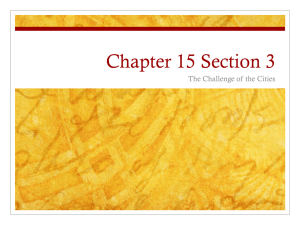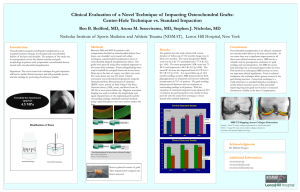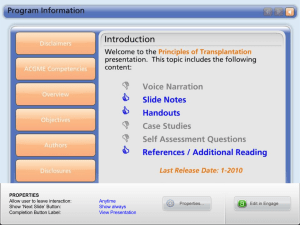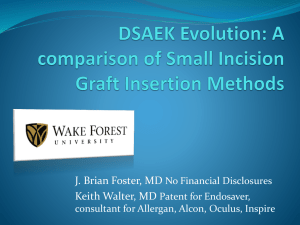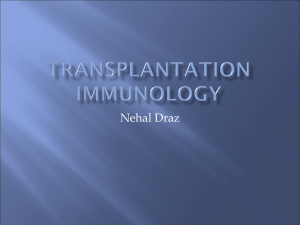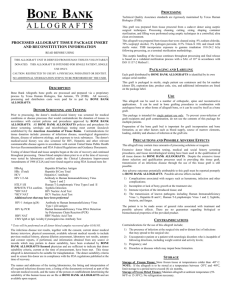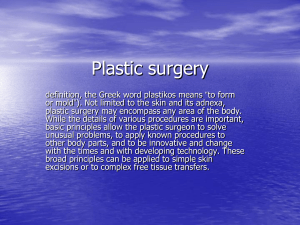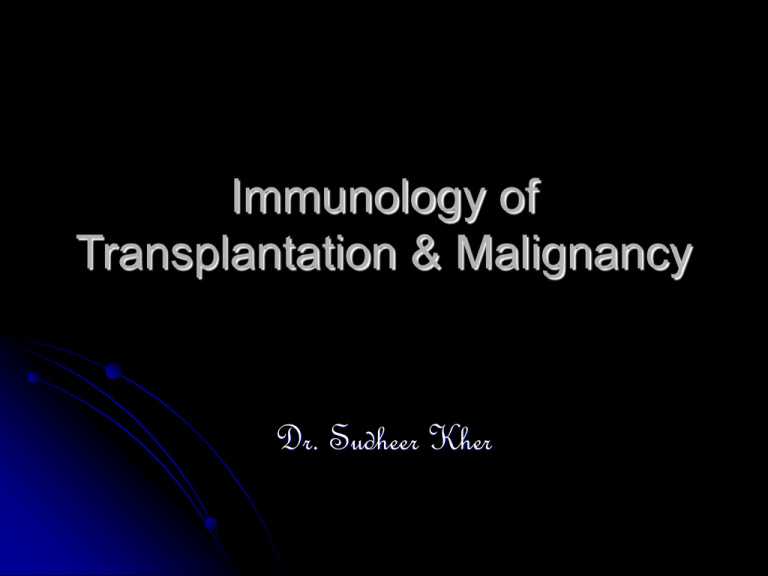
Immunology of
Transplantation & Malignancy
Dr. Sudheer Kher
Why do we need to transplant?
Basically to restore function when
Organ or tissue is irreparably damaged as a result of
disease or injury.
An organ or tissue is congenitally absent or defective.
Transplant or Graft -Tissue or organ that is
transplanted.
Donor - The individual from whom tissue or
organ is taken.
Recipient - The individual in whom the tissue or
organ is applied.
Historical
Mankind’s ancient dream.
Ancient nation’s mythologies always talk of
some kind of transplantation across species
Skin grafting technique using patient's own skin
to reconstruct severed nose described in
Shushruta Samhita (800 BC).
Transplantation of Elephant head – Lord
Ganesha.
1940 – Medawar conclusively proved
immunological basis of rejection of exogenous
grafts.
Classification of Transplants
Basis – Organ /
Tissue transplanted
Kidney Transplant
Heart Transplant
Skin Transplant
Basis – Anatomical site of
origin / destination of
transplant
Orthotopic – Normal site
Heterotopic – Abnormal
site
Classification of Transplants
Basis – Freshness
Fresh graft
Stored graft
Basis – Whether live
or dead
Vital grafts e.g.
kideney
Static or Structural
grafts e.g. Artery,
Bone.
Basis – ImmunologicalGenetic & Antigenic
relationship between donor &
recipient.
Autograft – Self graft
Syngeneic / Isograft – Same
genetic constitution e.g. identical
twins
Allograft – Same species but
different genetic constitution.
Xenograft – Different species.
The allograft rejection –
The First set response.
When skin from rabbit is applied to
another genetically unrelated animal –
Initially the graft is accepted. Vascularization
starts. Remains healthy for 2-3 days.
By 4th day, inflammation starts, Lymphocytes
and Macrophages invade. BVs occluded by
thrombi, vascularity diminishes, ischemic
necrosis sets in. Graft changes to scab ->
sloughed off by 10th day.
This is called ‘first set response’.
The allograft rejection –
The Second set response.
If, in an animal, which has rejected a graft
by first set response, another graft from
the same donor is applied –
The graft is rejected in an accelerated
manner.
Vascularization is attempted but is soon
interrupted by inflammatory response.
Necrosis sets in early, graft is sloughed off by
6th day.
This accelerated allograft rejection is called
‘second set response’.
Mechanism of allograft rejection
Basis immunological.
Clear from specificity of second set response.
Accelerated rejection seen only if the second graft is
from the same donor as the first.
Application of skin graft from another donor evokes
only the first set response.
Allograft accepted if the recipient animal is made
immunologically tolerant.
If splenic cells of the donor are injected into recipient
fetal or neonatal animal, they will accept the graft at a
later time. This is due to specific immunological
tolerance
Mechanism of allograft rejection
Transplantation immunity is predominantly CMI.
First set response almost exclusively by T cells.
Humoral antibodies are also produced. They have
some role in second set response.
Hyperacute rejection –
If transplantation is attempted in animals having high
titre of antibody against graft antigens, the graft
remains pale and is rejected in matter of hours. This
is also called as ‘White graft response’.
Seen in human kidney transplantation when there is
high antibody titre due to previous transplantation,
blood transfusion or pregnancies.
Immunological enhancement
Humoral antibodies may sometimes act against CMI, by
inhibiting graft rejection.
If recipient is pretreated with one or more injections of
killed donor tissue and the transplant applied
subsequently, the graft survives longer than in control
animals. This effect can be passively transferred by
injecting antibodies.
Mechanism –
Ab may combine with Ag released from the graft, thus
inhibiting initiation of immune response. (Afferent)
Ab may combine with lymphocytes of appropriate specificities
and by negative feedback mechanism stop response
(Central).
Surface of graft cells may be coated by Ab thus preventing
sensitized lymphocytes coming in contact with them.
(Efferent)
Allograft immunity is a generalized
response directed against ALL
antigens of the donor.
A recipient sensitized by a skin graft will
reject by second set response not only
another skin graft but also any other organ
/ tissue graft from the same donor.
Transplantation in F1 hybrids
AA
Transplantation
Successful
AB
BB
Transplantation
Fails
AB
Unilateral Sex linked
histoincompatibility
XY
XX
Transplantation
Successful
Transplantation
Fails
XX
XY
How to make a graft survive?
Blood group matching
HLA matching
Mixed Lymphocyte
Reaction (MLR)
Immuno suppression
Privileged site transplants
Cartilage
Brain
Testes
Cornea
Immuno suppression
Experimental animals
Neonatal thymectomy
Chronic lymphatic
drainage
Administration of ALS
Clinical situation
Steroids
Azathioprene
Cyclosporin A
Repamycin
FK-506
Graft Versus Host Reaction (GVH)
Graft mounting immune response to the
antigens of the host.
Occurs when
Graft
contains immunocompetent cells
Recipient possesses transplantation Ag that
are absent in graft
The recipient must not reject the graft
Situations leading to GVH
Allograft in a recipient in whom specific
immunological tolerance has been induced
Adult lymphocytes injected into
immunologically deficient recipient.
Immunodeficiency could be due to
immaturity (newborn) or suppression
(drugs)
F1 hybrid receiving transplant from any
parent strain
Clinical Features of GVH
in Animals
Retardation of growth
Emaciation
Diarrhea
Hepatpsplenomegaly
Lymphoid atrophy
Anemia
Death
Syndrome is called Runt Disease
Immunology of Malignancy
When a cell undergoes malignant change
Acquires new antigens
May lose some normal antigens
The tumor is therefore antigenetically
“different” than normal tissue and
considered as allograft and accordingly
meets with immune response.
Evidence for immune reactivity
to tumors
Tumors that have severe lympho-reticular infiltration have a better
prognosis than those that do not.
Certain tumors regress spontaneously (e.g., melanomas,
neuroblastomas).
There is an increased incidence of primary and secondary
malignancies (particularly lympho-reticular tumors) in
immunodeficient patients).
Antibodies and immune T lymphocytes (in cytotoxicity and mitogenic
response assays) have been detected in patients with tumors.
The young and the very old have an increased occurrence of tumors.
These members of the population often have an immune system that
is less effective.
Finally, animals can be specifically immunized against various types
of tumors.
Tumor Antigens
Present in malignant cells but absent in
corresponding normal cells.
Present in cell membrane. Called as
Tumor Specific Transplantation Antigens (TSTA)
or
Tumor Associated Transplantation Antigens
(TATA)
In chemically induced tumors, TSTA is tumor
specific while in virus induced tumors TSTA
is virus specific.
Reappearance of Fetal Antigens
Found in embryonic & malignant cells but
not in normal adult cells
Alpha fetoproteins in malignant hepatomas
Carcinoembryonic antigens in colonic cancers
Used for diagnostic purposes
Immunity against tumors
Evidence mostly from experimental tumors,
although there is ample evidence for anti-tumor
immune reactivity in humans.
In experimental studies, animals can be
immunized by administering inactivated tumor
cells or by removal of a primary tumor.
Also, immunity can be transferred from an
animal, in which a tumor has regressed, to a
naive animal by injection of lymphocytes (T
cells).
All components of the immune system (nonspecific and specific; humoral and cellular) can
affect the growth and progression of a tumor.
Escape from immunosurveillance
Tumors may not express neo-antigens that are
immunogenic or they may fail to express costimulatory molecules for the activation of Tcells. In addition, certain tumors are known to
lack or be poor expressers of MHC antigen
The amount of antigen may be too small to
stimulate the immune system and, due to the
rapid proliferation of malignant cells, the immune
system is quickly overwhelmed
Escape from immunosurveillance
Some tumors may evade the immune
system by secreting immunosuppressive
molecules
Others may induce suppressor cells.
Also, some tumors may shed their unique
antigens which block antibodies and T
cells from reacting with malignant cells.
“Smokescreen” mechanism.
The way ahead for cancer therapy
Integrated approach
Surgery
Radiotherapy
Chemotherapy
Immunotherapy

